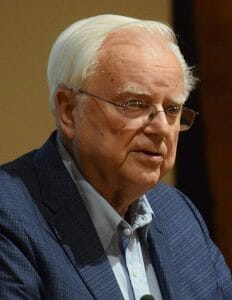Born in Chicago, Drake became interested in astronomy at age 8, when he started pondering an idea: if humans evolved through chance, then that means other civilizations might exist in the universe — extraterrestrial life. Thanks to a scholarship from the Navy ROTC, Drake went to Cornell University to study astronomy. A lecture by astrophysicist Otto Struve reinforced the idea that there could be extraterrestrial life, which inspired Drake to get his Ph.D in Radio Astronomy at Harvard. Radio telescopes are particularly well suited for what he was interested in: SETI — the Search for Extraterrestrial Intelligence. Working at the National Radio Astronomy Observatory in Green Bank, West Virginia, in 1959 Drake was given permission to start “Project Ozma” — the earliest serious searches for intelligent life.

As part of that work, in 1961 Drake worked out a way to estimate just how many intelligent civilizations there might be in our galaxy that we could find using an estimate of the average rate of star formation × the fraction of those that have planets × the average number of planets per star with planets that might be able to harbor life × the number of those planets that might actually develop life × the fraction of those that develop intelligent life × the fraction of those that develop a technology that we could detect from a distance × the length of time such civilizations transmit detectable signals (on purpose or not, just as we send high-power TV signals out) into space. Using the resulting “Drake Equation”, by filling in conservative estimates (e.g., that just 20 percent of stars develop planets and only 10 to 20 percent would have technology to communicate), the huge number of stars in our galaxy alone meant that there could be 50 million planets with intelligent life; Drake swagged that there should be at least 1,000, and as many as 100 million. The Drake Equation became known as “the second most-famous equation in science” (after Einstein’s E=mc2).

The numbers in the equation have been refined over the years, including that the average star has at least one planet, thus increasing the chance of intelligent life. The search was not just passive: in 1974, Drake wrote the Arecibo Message, which in very simple form communicates humanity’s existence and planet. It was transmitted by the Arecibo radio telescope in Puerto Rico toward a reasonably close globular star cluster, M13, in November 1974. M13 is far enough away that the radio message, traveling at the speed of light, will take more than 25,000 years to arrive. Drake led the effort to convert Arecibo from a military installation to a civilian scientific research facility, and became its first scientific director. In addition to academic duties, Drake served as the Director of the SETI Institute, which was formed in 1984, and served as Chairman of the Board of Physics and Astronomy for the National Research Council. Drake died at his home in Aptos, Calif., on September 2. He was 92.
